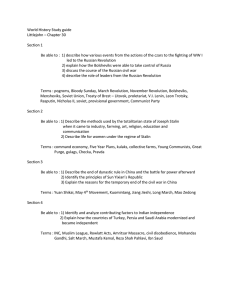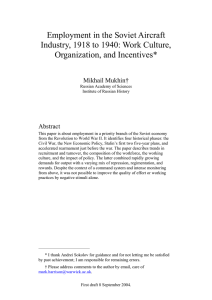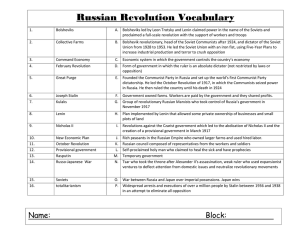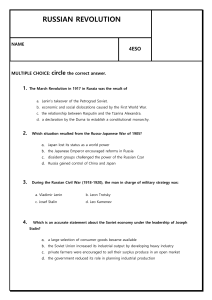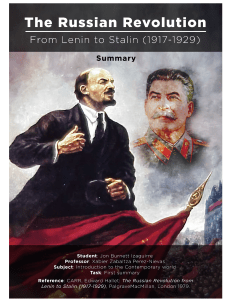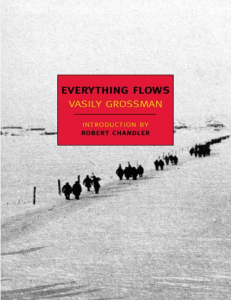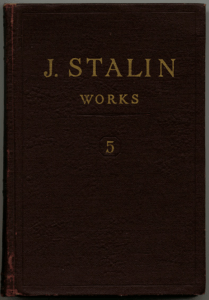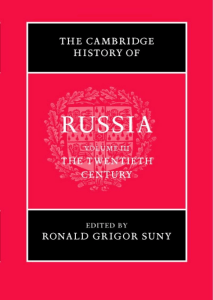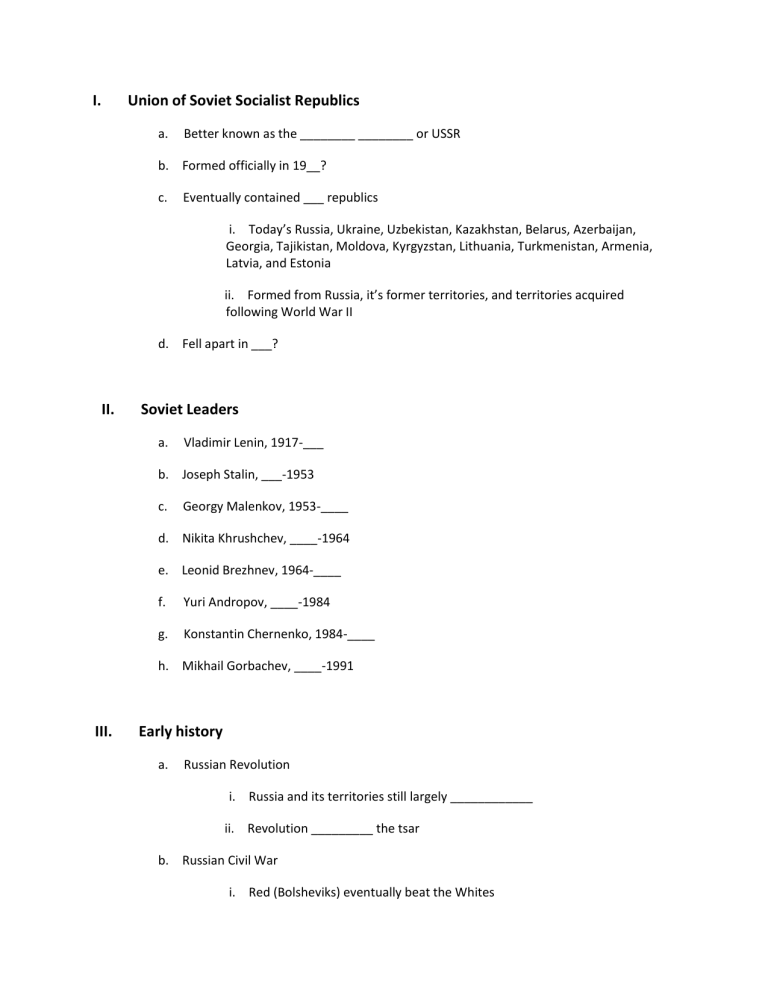
I. Union of Soviet Socialist Republics a. Better known as the ________ ________ or USSR b. Formed officially in 19__? c. Eventually contained ___ republics i. Today’s Russia, Ukraine, Uzbekistan, Kazakhstan, Belarus, Azerbaijan, Georgia, Tajikistan, Moldova, Kyrgyzstan, Lithuania, Turkmenistan, Armenia, Latvia, and Estonia ii. Formed from Russia, it’s former territories, and territories acquired following World War II d. Fell apart in ___? II. Soviet Leaders a. Vladimir Lenin, 1917-___ b. Joseph Stalin, ___-1953 c. Georgy Malenkov, 1953-____ d. Nikita Khrushchev, ____-1964 e. Leonid Brezhnev, 1964-____ f. Yuri Andropov, ____-1984 g. Konstantin Chernenko, 1984-____ h. Mikhail Gorbachev, ____-1991 III. Early history a. Russian Revolution i. Russia and its territories still largely ____________ ii. Revolution _________ the tsar b. Russian Civil War i. Red (Bolsheviks) eventually beat the Whites ii. Bloody conflict iii. Whites assisted by foreign powers such as the United States 1. Reds saw foreign powers as threats to the fledgling Soviet state iv. Left country in worse shape than before the revolution IV. Vladimir Lenin’s leadership a. NEP – new economic policy i. Allowed for some degree of private enterprise b. Attempted to improve the Russian/Soviet economy without foreign assistance c. V. Desire to spread __________revolution worldwide Joseph Stalin’s Five-Year Plans a. Replaced the NEP b. Command economy focused on increased production of __________ and heavy industry c. VI. Little production of consumer goods World War II a. Country still not on par with the rest of _________ when Germany invaded b. Country was left __________ by the fighting i. Millions upon millions killed ii. Cities bombed beyond recognition iii. Fields and crops destroyed c. Recovery long and hard i. No outside assistance ii. Superpower iii. Had to rebuild USSR while securing hold on Eastern Europe (iron curtain) VII. Stalin’s harsh regime a. Totalitarian regime i. No freedom of speech ii. No tolerance for dissidents iii. Harsh censorship iv. Enormous amounts of propaganda v. Soviet realism in art b. Gulags – forced labor camps for “enemies of the state” i. Dissidents, undesirables, religious people, etc.
